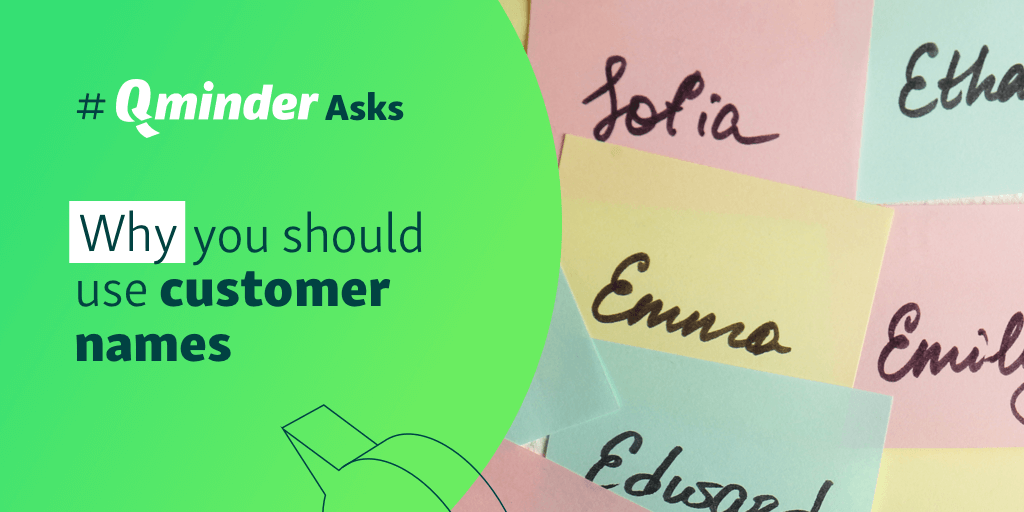Most of us are used to wasting a lot of time waiting in lines. Given that time is money, this means we lose our money, and we also experience psychological consequences of waiting: frustration, boredom, and anxiety.
Not to mention, lines are also bad for companies, as they lead to lower customer satisfaction and a loss in sales.
According to research, when customers have to wait in a line, they perceive it as a sign of quality. Moreover, the longer people wait, the more they are willing to purchase because they want to compensate the time they’ve already invested.
Does that mean that making customers wait is actually good for business? Not exactly, since many customers associate waiting with a bad customer experience.
What is "wow" customer experience?
The main ingredient of “wow” customer experiences is surprising your customers. As in, not only meeting their expectations, but addressing their needs in an unexpected and creative way, demonstrating that you are interested in helping people, not just getting money from them. A wow experience is all about emotional connection. It’s about empathy, gratitude, and kindness.
The modern markets are extremely competitive. Companies measure hundreds of various factors, trying to provide a better experience than their competitors and to make their business more efficient.
However, a wow customer experience cannot be measured. It’s the meaning of your service and trustful relationships between your customers and your brand.
Creating a wow experience requires you to think big, making every detail perfect and improving the overall culture of your organization. However, there are a few simple tips that will help you improve your customer experience, and we are going to share them with you in this article.
Customer waiting experience, online & offline
Waiting is an integral part of our everyday lives. For example, people have to wait in line in virtually any store they go.
When waiting in a line in a store, the waiting experience may turn out to be not so bad, after all. The thing is that store designers put a lot of effort into keeping visitors entertained or, at least, distracted. They make checkout lines look useful for customers, making them a place where you can purchase various snacks or other little things.
Thus, customers don’t feel like they’re wasting their time. In turn, retailers get an audience that has no other choice but to buy something, just in order not to get bored.
The reason why we have to wait when visiting stores is rather obvious. However, you may need to wait when ordering products or services online, as well. For example, when you wait for a list of available flights on an airline website, there’s nothing that could distract you from waiting, which makes this experience even more frustrating and painful.
That’s why online companies do everything they can to make their websites work as fast as possible. If you realize that there’s no way your online or offline business could provide your customers with products or services any faster, don’t panic.
It’s still possible to improve your customers’ overall experience, and that’s how you can do it.
How to improve your customers’ waiting experience
1. Set expectations
First, let your customers know that they will have to wait. They will be able to prepare psychologically, which minimizes the element of frustration. In addition, when your customers are informed, they have options. They can choose to visit your store tomorrow or they can leave and come back with some snacks.
2. Improve organization
The best way to reduce the waiting time is to have well-trained employees. If you have a website, make sure online support is always available so that your users can get the necessary help if the website doesn’t work as fast as they want. If you have a store, make sure you have several counters with properly trained employees. When customers interact with your employees, such an interaction should be friendly and warm.
3. Communicate with customers
Don’t wait until your customers start calling your support team or asking to see a manager. You should be the one who initiates the conversation. Although customers don’t like to wait, they can also understand your problem if you explain it, and they can forgive. Apologize for the delay and explain how long your customers will have to wait. This is a nice way to show respect for their valuable time.
4. Entertain them
While waiting, your customers should be able to read magazines or brochures. Make sure you have different magazines that will be interesting for different people. When talking about websites, you get even more opportunity to entertain your users, showing them promotional videos and other content related to your area, or asking them to take a quiz.
5. Create a good waiting area
Waiting rooms should be comfortable and clean. There’s nothing worse than overcrowded and noisy waiting rooms, so make sure your room can accommodate more customers than would be actually waiting. Make sure the interface of your website has pleasurable, calm colors and keeps your users engaged. You can also create a virtual waiting room for your website.
When customers have to wait, they feel irritated. In order to improve customer experience, companies put a lot of effort into reducing wait time.
However, such a task is quite expensive and, sometimes, even impossible. It’s important to understand that your customers’ waiting experience depends not only on objective factors that can be measured but also on subjective factors.
In other words, it depends on how your customers wait, not just for how long they do it. Give your customers a comfortable space, communicate with them, and entertain them so that they won’t see waiting as just a waste of time.
Ester Brierley is a QA Engineer in software outsourcing company, a seasoned content creator and virtual assistant for College Writer. When she’s not writing about cutting-edge digital trends, Ester takes online courses to improve her marketing skills. Follow her on Twitter.






